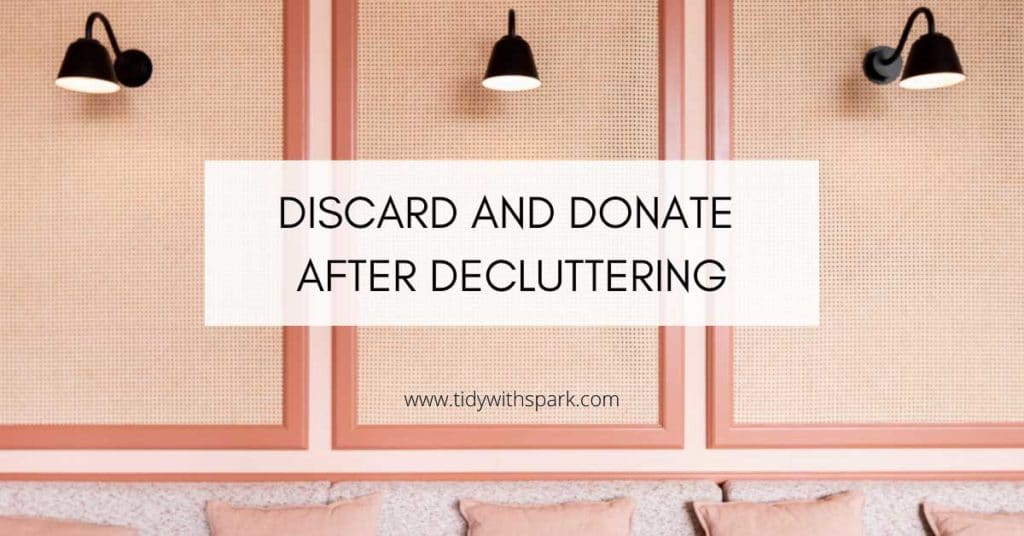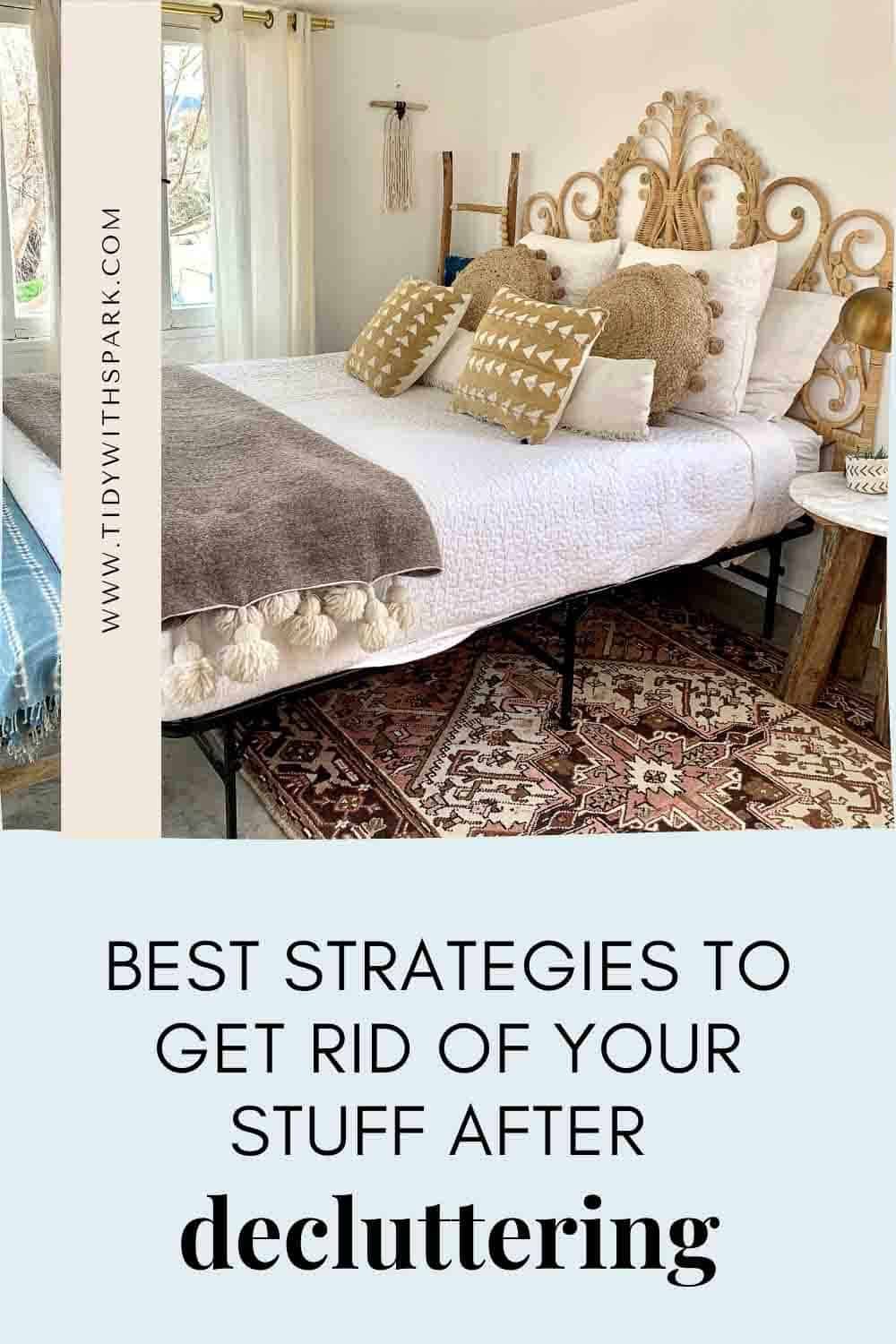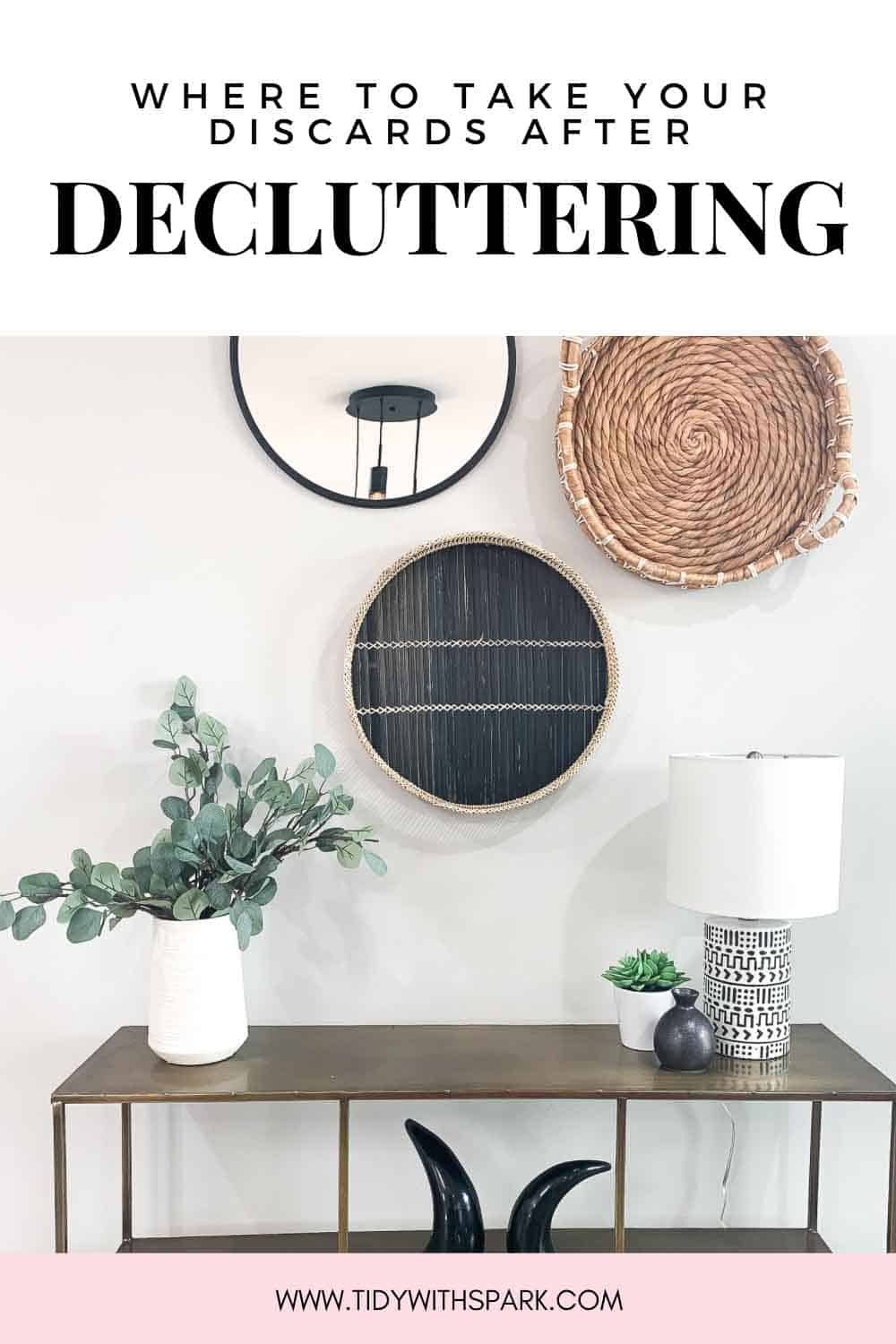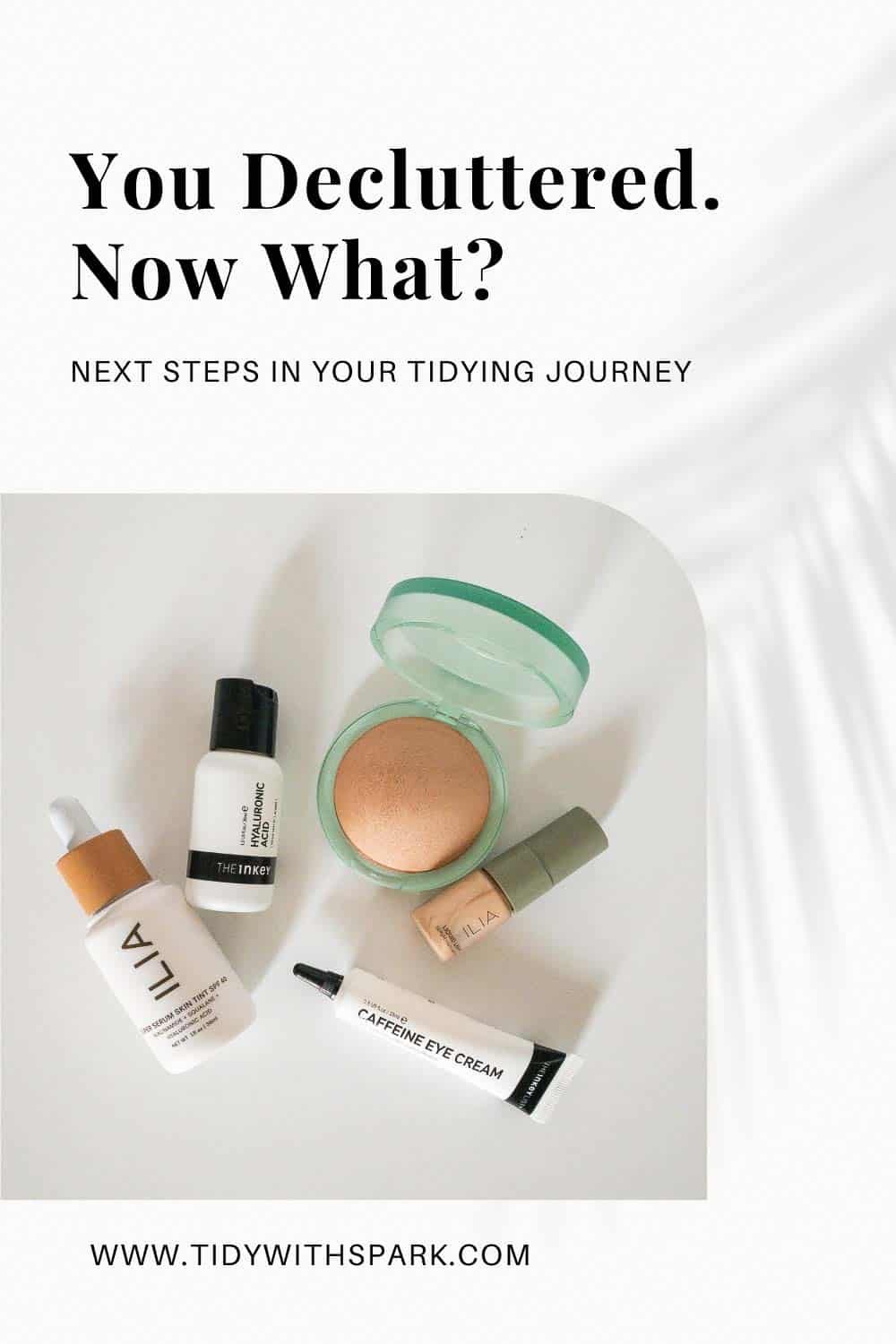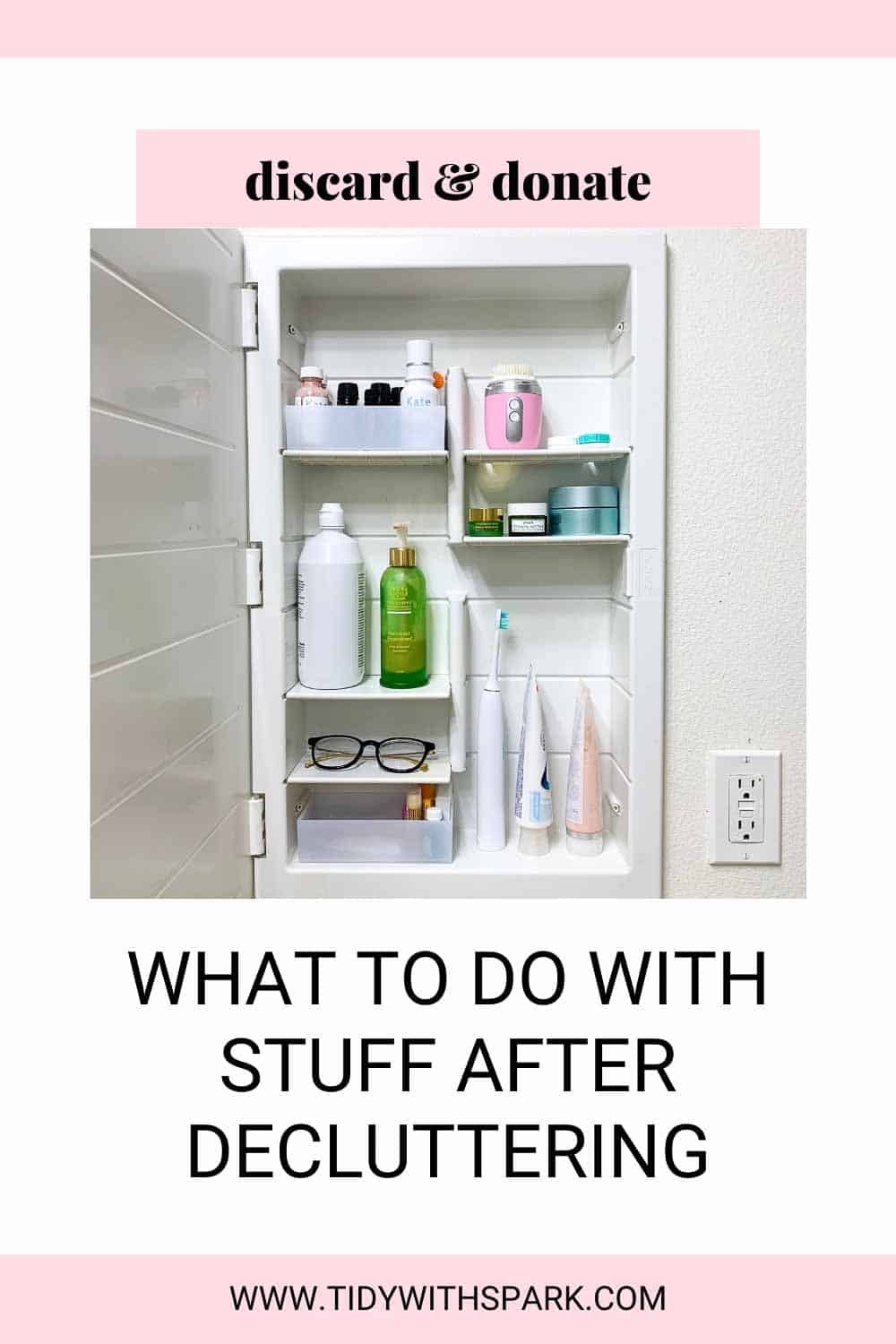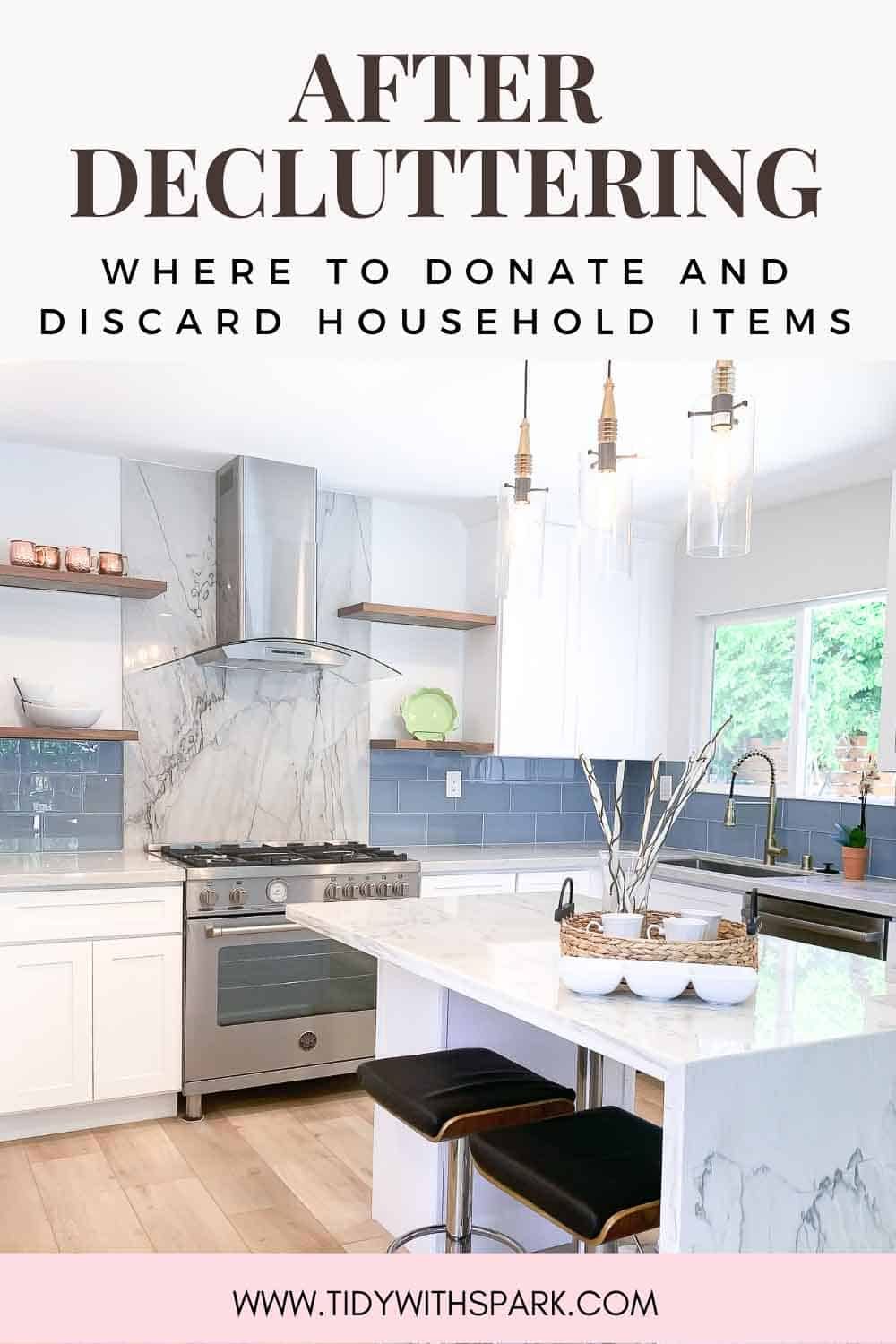Discard and donate after decluttering
Congratulations! You successfully took on the challenging task of decluttering your home and you’re now left wondering what you should do with the items you want to discard and donate.
This next step can feel like another big hurdle in your tidying journey, but it doesn’t have to.
I’m sharing tips, resources and all the goods on how to discard and donate after decluttering to continue the next steps to tidy up.
Items to discard
Now that you have confidently decided on which items to discard, it’s time to dedicate the time to creating a plan to discard the items. It’s not always appropriate to dump your items into the trash bin. Some items require extra care because the materials can be recycled or it is hazardous to dispose of the items in the garbage.
When you purchase items, it is important to realize that you as the owner of the items have a responsibility to care for and dispose of the item appropriately. This is part of the burden of owning things.
Always consider the materials of the items before putting it in the trash. Paper items do not always need to be trashed, rather the paper can be recycled. Taking the extra steps to properly dispose of the items is essential.
For example, household chemicals that you no longer use or are not of value to you should not be thrown away into the trash bin or poured down the drain. Contact your state’s waste management system for proper disposal instructions.
And what about old cell phones? These items do not go in the trash bin. Properly recycle them in any of the following ways:
- Take advantage of cell phone company buy-back programs where a discount on future purchases are given
- Take your cell phones to your local recycling centers where discards are properly recycled
- Drop them at recycling kiosks
Items to donate
For some of your items it may be easy to decide what can be donated verses trashed. Other times it isn’t a black or white decision. Let’s dig into some examples that might lie somewhere in the grey area.
Goodwill is not a dumping ground
Before diving into where to donate your items, it’s important to carve out space for this discussion.
No, Goodwill is not a dumping ground. It might seem like an easy singular drop-off, but it isn’t always the answer.
There are many items that are refused by Goodwill. The list below is not an exhaustive list and what is an acceptable donation may vary by state.
Please use the list as a quick guideline and refer to your local Goodwill for a comprehensive list. Also note that items must be clean and in sellable condition to be accepted by Goodwill.
Items Not Accepted:
- Alcohol
- Appliances
- Auto parts
- Blinds
- Carpeting
- Construction Materials
- Water beds
- Mattresses and box springs
- Water heaters
- Hazardous waste
- Medications (pills, creams)
- Weapons
- Medical Equipment
- Infant equipment (cribs, car seats, strollers, etc.)
Acceptable Items:
- Antiques, collectibles
- Artwork, frames
- Audio/Visual Equipment
- Bedspreads, bedding, linen, fabric
- Bicycles, Wheeled toys
- Books
- CDs, DVDs, VHS
- Clothing, shoes, accessories
- Computers/printers
- Dishware, Cookware, Utensils
- Crafts (packaged sets)
- Furniture
- Jewelry
- Glassware
- Sporting Goods
- Televisions
Used Makeup
After going through your bathroom toiletries and makeup you may have several barely used makeup products that you would like to donate.
However, it’s unlikely that the used makeup will be accepted at charitable organizations. Makeup products contain bacteria and it is considered unhygienic to pass these gently used products to others.
While the local woman’s shelter may not be able to accept these items, your local funeral home might.
You might not have thought of this and it may seem odd to make such a donation to a funeral home, but these products can be used for the deceased. Contact the local businesses in your area to find out.
Used crafting supplies
Crafting supplies are a specific item that you may not want to throw in the trash. Unused items can be donated to many different organizations.
Local schools are an excellent place to get into contact with for donating supplies. Often times, teachers are left to purchase craft supplies out of their own pockets. Receiving donations from the community can help with this additional cost and hardship.
Also consider donating to local churches because they may have crafting ministries where supplies would be welcomed and appreciated.
In my area, orphanages have also accepted crafting supplies for creative projects for residents.
Gifting to family or friends
I warn against giving your items to family and friends because we want to take care in not transferring our stuff to others we know. Also, when personal boundaries haven’t been established, those you gift the items to may begrudgingly accept your items because they do not want to create a confrontation or appear ungrateful for the donation.
When in doubt, ask before automatically assuming your friends and family would like your used items.
Find a good home for your donations
Taking the time to find a good home for your items is work and it isn’t always fast. Try thinking outside the box because your efforts will ensure that your items do not sit idle in a landfill, but can be used and appreciated and given another life by a new owner.
Offer Up is an app that is a marketplace exchange of goods usually for cash. If you genuinely want your items to go to a good home and you are willing to part with it with no monetary value in exchange, I recommend trying this app. Those who want the item will pick it up and you’ll know the item went to someone who could use it.
As an alternative, consider other online marketplaces such as Facebook upcycle groups or Facebook marketplace. These are ways to extend the life of your items and get them into the hands of those who need them.
Selling your items
Selling your items is also an option, but it will likely slow down the process of you getting items out of your home. Take the time to think through the amount of energy and effort that is needed to sell your items.
If it seems worth your time, then move forward with selling. Otherwise, clear out the goods because the faster your discards and donations leave your home, the faster you can enjoy clutter free freedom in your home.
Here are some options and ideas for selling your items:
Commit to action
I understand.
You just put all this effort and energy into making the decision to discard or donate and that took a lot out of you. You’re close to the finish line, but your job is not yet done.
You must get the items out of your home.
This is a non-negotiable because the idea that you can tend to the discards and donations “later” sometimes becomes piles of clutter in your garage or entryway of your home, despite your best intentions.
By leaving these items as little reminders to take care of the action, these items continue to stay in our homes. Every time you pass by the items it’s another reminder of stuff you didn’t take care of.
The truth is, these little things weigh on our shoulders and it doesn’t have to. Get it out of your home so that you can start living the life you desire.
A few warnings
Don’t let others see your discards and donates especially if it’s not their item.
Ask them to kindly mind their business. And I’m serious.
If you are tackling your items and yours alone, there is no need to explain or justify your decisions. Take ownership of your decisions and get on with it.
And don’t forget, the trunk of your car is an extension of your home. By moving your clutter to your trunk, you are shifting the mess. Be sure to take the next actions of discarding or donating what is in your trunk to really be free of the mess.
I promise, your future self will thank you.
Conclusion
There is a lifecycle to our stuff. Our stuff is born (we bring it home from the store), we use and enjoy the item and then the usefulness or function is gone and we must find a way to responsibly take it to the grave.
Be aware of this process and acknowledge the real work that is involved with owning items. It might just help you to think twice before purchasing items on a whim or without intentionality.
When you give yourself pause, you might make a different decision.
There is a real cost to our clutter and it can be seen at the end of the lifecycle.
Tidy on and tidy strong, my friends!
Southern California based Professional Organizer, Sandy Park, owner and founder of Tidy with SPARK shares her joy of organization with her clients.
She serves clients in Orange County as well as the hundreds of thousands of followers on her combined social media platforms.
Connect with Sandy through her website or by connecting through her social channels.
